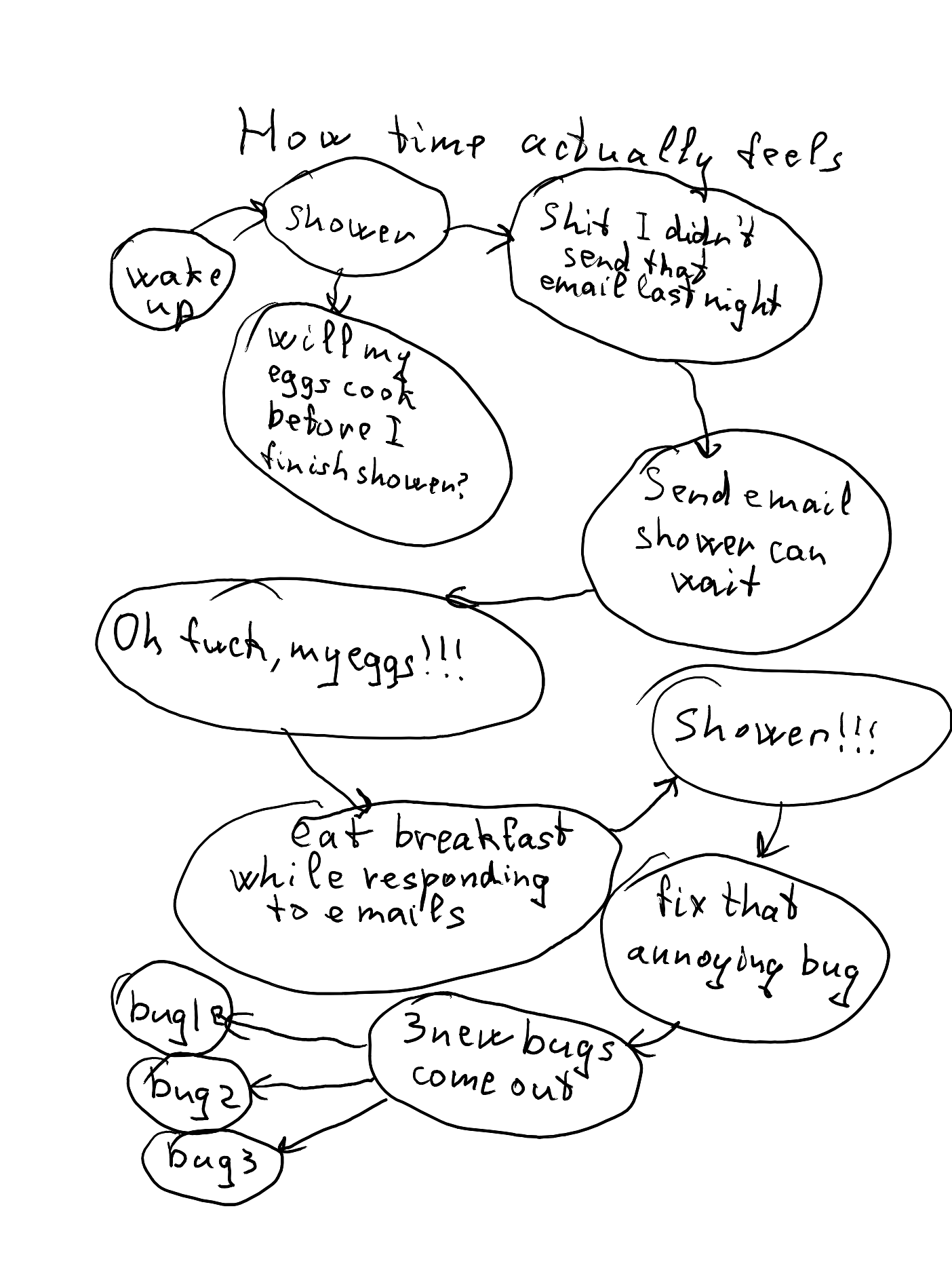Chapter 0: Time is broken. UTMS is my fix.
I built a system to track time the way I actually live it — not the way productivity apps think I do. UTMS is not a to-do list, it's a time engine.

Look closely at this mess of wires, blinking lights, and a tiny screen. At first glance, it looks like a random gadget — some quirky hobby project or retro tech experiment. But this oddball device is at the heart of a problem that affects every human on the planet:
Our experience of time is broken.
Think about the last week. How many times did you:
Start a task, only to get pulled away and never really come back?
Juggle several things at once, switching constantly but feeling less productive?
Miss deadlines not because you forgot them, but because the tools you use don’t capture how your day really flows?
Our current tools — calendars, timers, to-do lists — treat time like a simple line. They expect our lives to unfold neatly in slots and chunks. But life isn’t neat. It’s messy. It’s full of interruptions, detours, habits, and bursts of focus.
We live in a complex web of overlapping actions and unexpected events. The way we experience time is fractured and fragmented, yet the tools we have ask us to pretend it’s all clean and linear.
This mismatch isn’t just inconvenient. It hurts us.
It leads to frustration, burnout, lost productivity, and the nagging feeling that we’re never really in control of our time.
That’s why I built UTMS — the Universal Time Modeling System.
UTMS is not just another calendar or task manager. It’s a radical rethink of how to represent time — a system designed from the ground up to model the messy, dynamic way we actually live it.
Imagine a system that understands:
That tasks don’t happen in isolation but overlap, interrupt, and flow into one another.
That habits form the backbone of our daily routines but can be tracked, measured, and improved over time.
That time is not just marked by events, but by anchors — moments that help orient us in a chaotic schedule.
That interruptions aren’t failures, but natural parts of human cognition to be understood and managed.
That recurrence and emergence happen naturally, and can be embraced rather than fought.
UTMS is programmable and AI-assisted, built to let you model time on your own terms — to build a personalized map of your attention, actions, and rhythms.
It’s like having a real-time cognitive assistant that helps you see your time clearly and act decisively — even when the world pulls you in a hundred directions.
Why did I build this?
Because I couldn’t find anything else like it.
I’m a penetration tester by trade — a person who thrives on precision, understanding complex systems, and anticipating the unexpected.
Yet even with all my tools and skills, I found traditional time management systems frustratingly shallow. They didn’t capture the way I think about interruptions, how context switching drains energy, or how habits quietly shape my day.
I wanted a system that could think about time like I do — not just mark it on a calendar.
So I started building.
Within days of using the first version of UTMS, I noticed something surprising: my relationship with time began to change.
I wasn’t just tracking what I did; I was understanding how I moved through my day.
I felt more in control, less fragmented, and strangely, more creative.
This physical Arduino setup you see? It’s my first bridge between the abstract world of time modeling and tangible reality — a prototype to experiment with real inputs and outputs that represent time not as numbers on a clock, but as lived experience.
This blog is the start of a journey.
I’ll be sharing the story behind UTMS: the concepts, the challenges, and the surprising insights that come from modeling time as a living, breathing phenomenon.
Here’s what’s coming soon:
How UTMS models interruptions and multitasking, and why that matters for productivity
The role of habits and anchors — and how they can help you regain control
How programmable AI assists in making sense of the chaos
Real-world examples of using UTMS to change the way you work and live
If you’re tired of trying to fit your messy life into rigid tools, if you’re curious about a new way to see and work with time, this series is for you.
Stay tuned.









